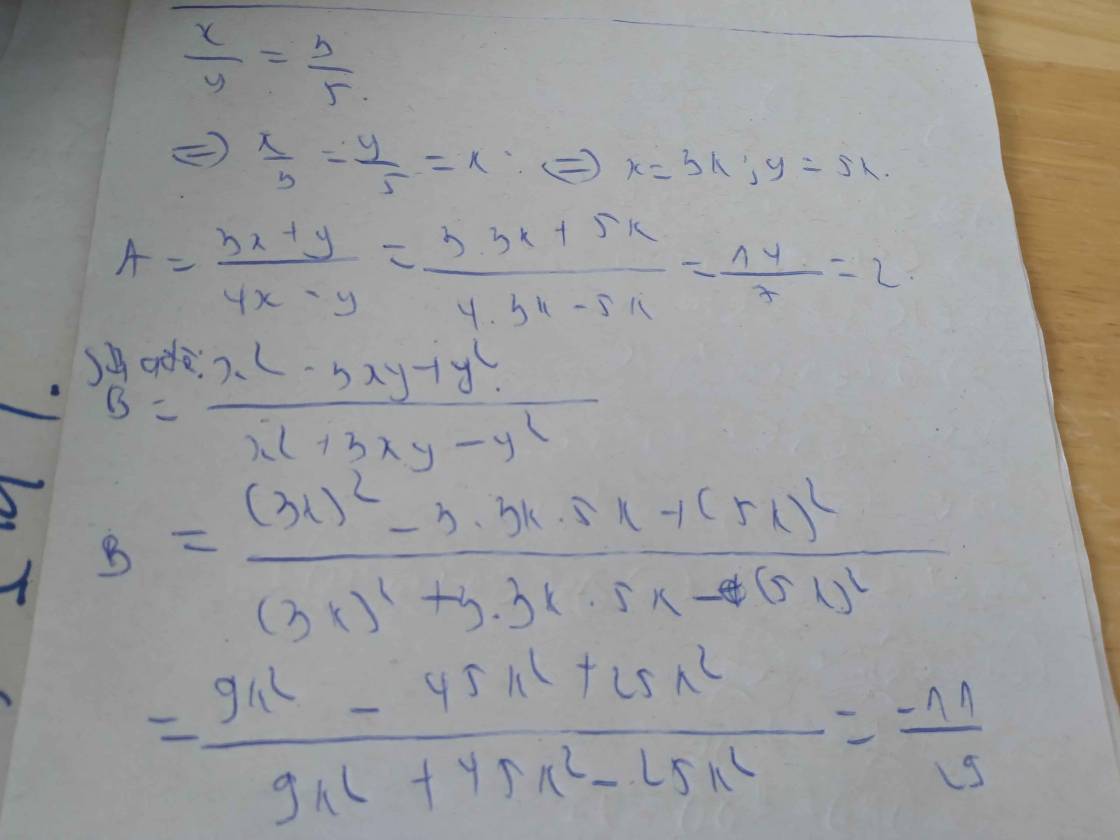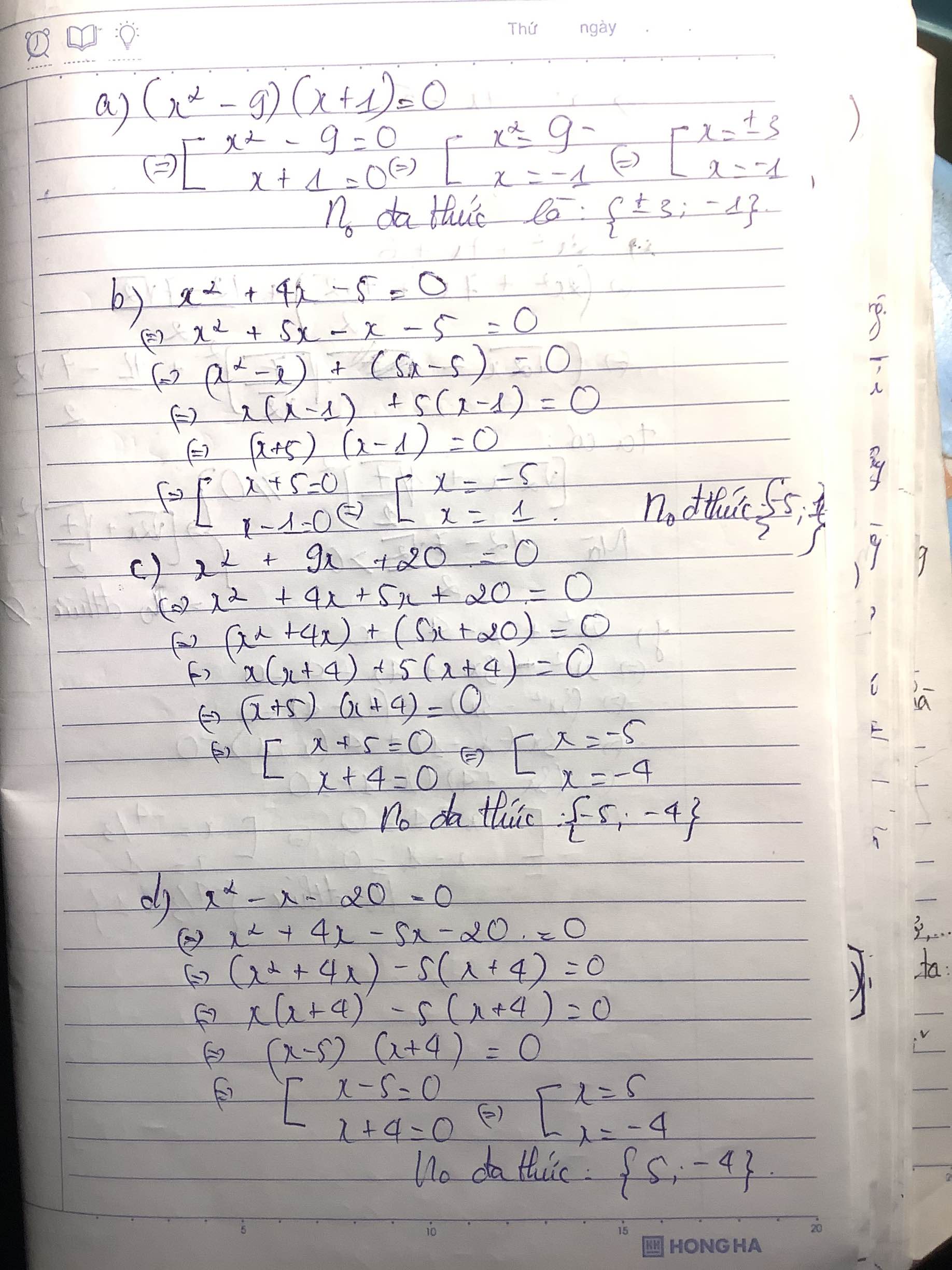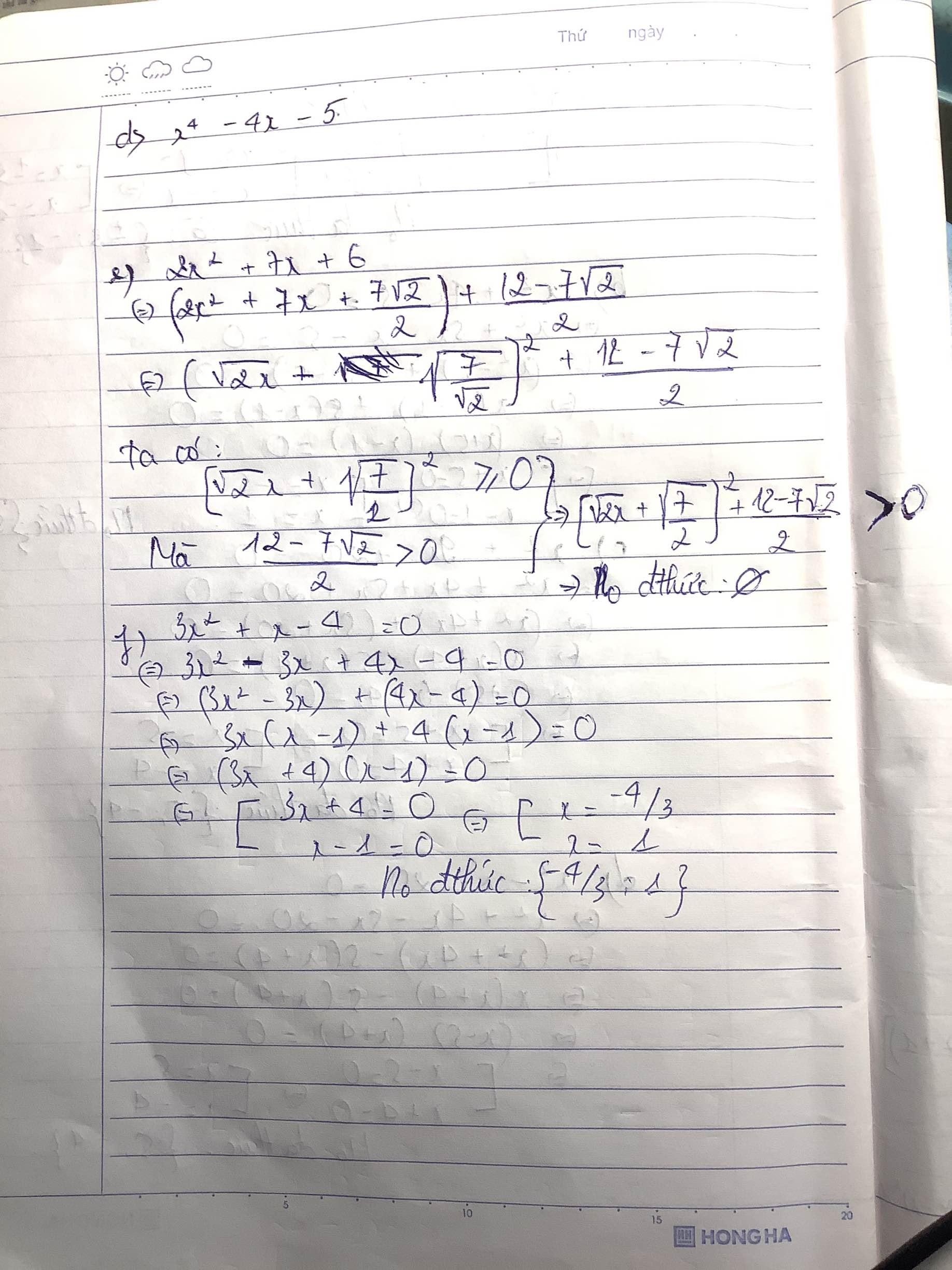Hãy nhập câu hỏi của bạn vào đây, nếu là tài khoản VIP, bạn sẽ được ưu tiên trả lời.

\(A\left(x\right)=\left(3-4+x^2\right)^{2004}\left(3+4x+x^2\right)^{2005}\)
Đa thức `A(x)` sau khi bỏ dấu ngoặc:
\(A\left(x\right)=a_nx^n+a_{n-1}x^{n-1}+...+a_1x+a_0\)
Với `n = 2 . 2004 + 2 . 2005 = 8018`
Ta thay `x = 1` thì \(A\left(1\right)=a_n+a_{n-1}+...+a_1+a_0\)
`=> A(1)` là tổng các hệ số của `A(x)` khi bỏ dấu ngoặc
Ta có: \(A\left(1\right)=\left(3-4.1+1^2\right)^{2004}\left(3+4.1+1^2\right)^{2005}\)
\(=0^{2004}.8^{2005}=0\)
Vậy tổng các hệ số của đa thức `A(x)` nhận được sau khi bỏ dấu ngoặc là `0`

a) \(\left(x-1\right)\left(x+5\right)=0\Rightarrow\left[{}\begin{matrix}x-1=0\\x+5=0\end{matrix}\right.\)\(\Leftrightarrow\left[{}\begin{matrix}x=1\\x=-5\end{matrix}\right.\)
b) \(x+1x^2+1=x^2+x+1=x^2+2.\dfrac{1}{2}x+\dfrac{1}{4}+\dfrac{3}{4}=\left(x+\dfrac{1}{2}\right)^2+\dfrac{3}{4}\ge\dfrac{3}{4}>0\)với mọi x.
=> Pt vô nghiệm.
c) \(x^2+4x=0\Leftrightarrow x\left(x+4\right)=0\Leftrightarrow\left[{}\begin{matrix}x=0\\x+4=0\end{matrix}\right.\)\(\Leftrightarrow\left[{}\begin{matrix}x=0\\x=-4\end{matrix}\right.\)
P/s: Check lại đề ý b nhé.
a) Ta có:(x-1)(x+5)=0
\(\Leftrightarrow\left[{}\begin{matrix}x-1=0\\x+5=0\end{matrix}\right.\Leftrightarrow\left[{}\begin{matrix}x=1\\x=-5\end{matrix}\right.\)
Vậy: S={1;-5}
b) Ta có: \(x^2+x+1=0\)
\(\Leftrightarrow x^2+2\cdot x\cdot\dfrac{1}{2}+\dfrac{1}{4}+\dfrac{3}{4}=0\)
\(\Leftrightarrow\left(x+\dfrac{1}{2}\right)^2+\dfrac{3}{4}=0\)(Vô lý)
Vậy: \(S=\varnothing\)
c) Ta có: \(x^2+4x=0\)
\(\Leftrightarrow x\left(x+4\right)=0\)
\(\Leftrightarrow\left[{}\begin{matrix}x=0\\x+4=0\end{matrix}\right.\Leftrightarrow\left[{}\begin{matrix}x=0\\x=-4\end{matrix}\right.\)
Vậy: S={0;-4}

Lời giải:
a. $-x^2-2x-8=-7-(x^2+2x+1)=-7-(x+1)^2$
Vì $(x+1)^2\geq 0$ với mọi $x\in\mathbb{R}$ nên
$-x^2-2x-8=-7-(x+1)^2\leq -7< 0$ với mọi $x\in\mathbb{R}$
Vậy biểu thức luôn nhận giá trị âm với mọi $x$
b.
$-x^2-5x-11=-11+2,5^2-(x^2+5x+2,5^2)< -11+3^2-(x+2,5)^2$
$=-2-(x+2,5)^2\leq -2< 0$ với mọi $x\in\mathbb{R}$ (đpcm)
c.
$-4x^2-4x-2=-1-(4x^2+4x+1)=-1-(2x+1)^2\leq -1< 0$ với mọi $x\in\mathbb{R}$ (đpcm)
d.
$-9x^2+6x-7=-6-(9x^2-6x+1)=-6-(3x-1)^2\leq -6< 0$ với mọi $x\in\mathbb{R}$ (đpcm)

\(âP\left(x\right)=13x^3+4x^2-11x-2\)
\(b.Q\left(x\right)=x^3+9x-5\)
\(c.A\left(x\right)=14x^3-x^2+10x+14\)
\(d.B\left(x\right)=2x^2+x+3\)

Bài 2 :
a, \(x^2-4x+4+1=\left(x-2\right)^2+1\ge1\)
Dấu ''='' xảy ra khi x = 2
b, Ta có \(\left(x+1\right)^2+10\ge10\Rightarrow\dfrac{-100}{\left(x+1\right)^2+10}\ge-\dfrac{100}{10}=-10\)
Dấu ''='' xảy ra khi x = -1
Bài 1 :
a, Ta có \(A\left(x\right)=x^2-4x+4=0\Leftrightarrow\left(x-2\right)^2=0\Leftrightarrow x=2\)
b, \(B\left(x\right)=x^2\left(2x+1\right)+\left(2x+1\right)=\left(x^2+1>0\right)\left(2x+1\right)=0\Leftrightarrow x=-\dfrac{1}{2}\)
c, \(C\left(x\right)=\left|2x-3\right|=\dfrac{1}{3}\Leftrightarrow\left[{}\begin{matrix}2x=\dfrac{1}{3}+3=\dfrac{10}{3}\\2x=-\dfrac{1}{3}+3=\dfrac{8}{3}\end{matrix}\right.\Leftrightarrow\left[{}\begin{matrix}x=\dfrac{5}{3}\\x=\dfrac{4}{3}\end{matrix}\right.\)





a ) \(A=-x^2+4x+25=-\left(x^2-4x+4\right)+29=-\left(x-2\right)^2+29\le29\forall x\)
b ) \(B=-x^2-4x+15=-\left(x^2+4x+4\right)+19=-\left(x+2\right)^2+19\le19\forall x\)
c ) \(C=-x^2+10x-17=-\left(x^2-10x+25\right)+8=-\left(x-5\right)^2+8\le8\forall x\)
c ) \(D=-4x^2+4x+9=-\left(4x^2-4x+1\right)+10=-\left(2x-1\right)^2+10\le10\forall x\)